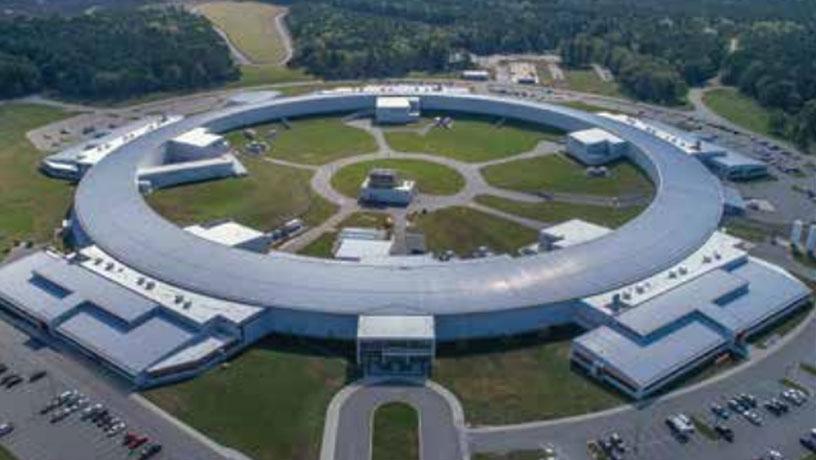The Brookhaven Connection
Under lab conditions, researchers can make remarkable progress studying battery systems and fuel cell catalysts. But to properly assess how these platforms behave while operating in the real world requires something else altogether—specifically, something called a synchrotron.
An electron accelerator almost two football fields in size, a synchrotron can cost upward of $1 billion to build; only six exist in the United States. One of the world’s most powerful is currently located on New York’s Long Island, at Brookhaven National Laboratory (BNL).
The close proximity between Columbia Engineering and BNL has led to a close relationship between the two institutions. Through his guest appointment at BNL, Professor Jingguang Chen directs a research team on-site that collaborates with his Morningside Heights group in exploring catalysts and electrocatalysts. “Those efforts require the characterization of catalysts under electrochemical reaction conditions,” says Chen, something that can only be accomplished at BNL.
A little over a decade ago, Chen also cofounded BNL’s Synchrotron Catalysis Consortium. A resource available to scientists around the country, the consortium has trained more than 1,000 individuals and 100 research groups; it also helps run operations at the facility.
Professors Dan Steingart and Alan West both exploit BNL’s synchrotron facilities to study batteries. In using visualization methods to peer inside working batteries, their research expands understanding of how electrochemical reaction rates vary with position and time within materials. Such variations significantly impact performance and battery life—an impact that only grows as batteries increase in size.

Brookhaven National Laboratory's National Synchrotron Light Source II
